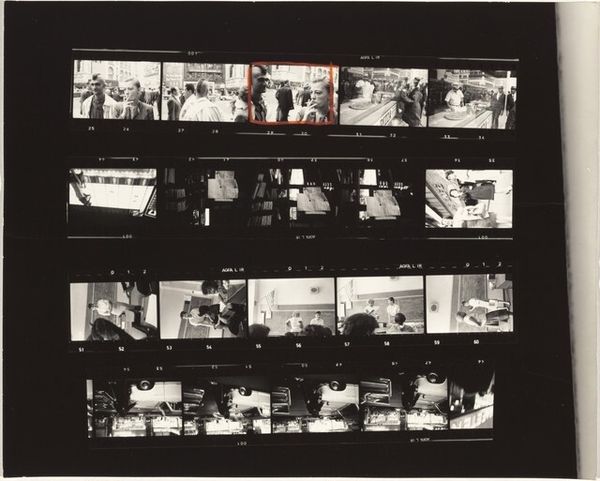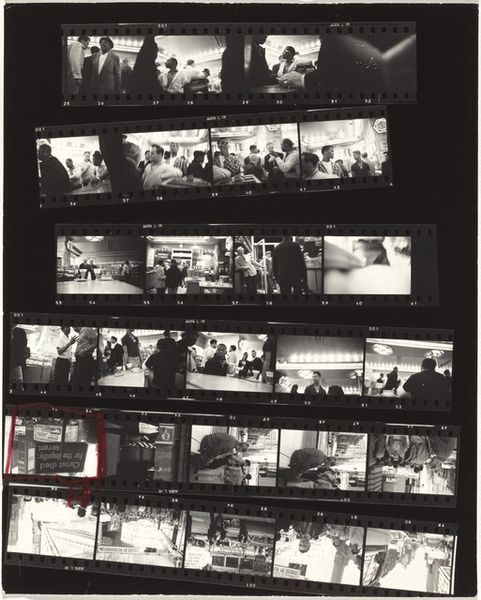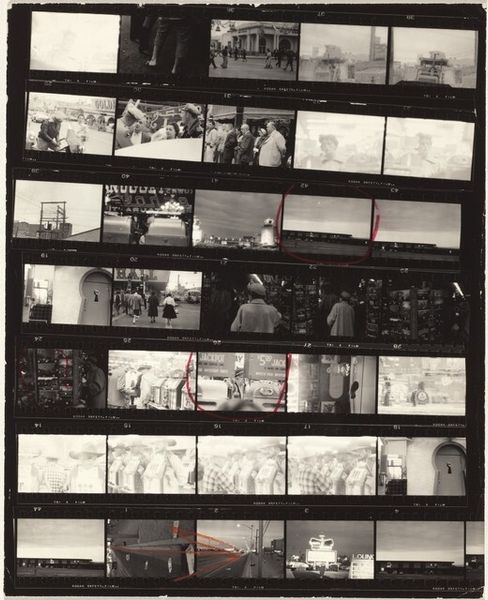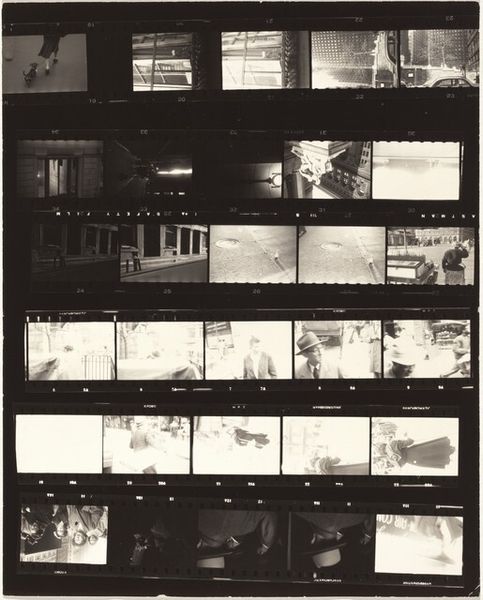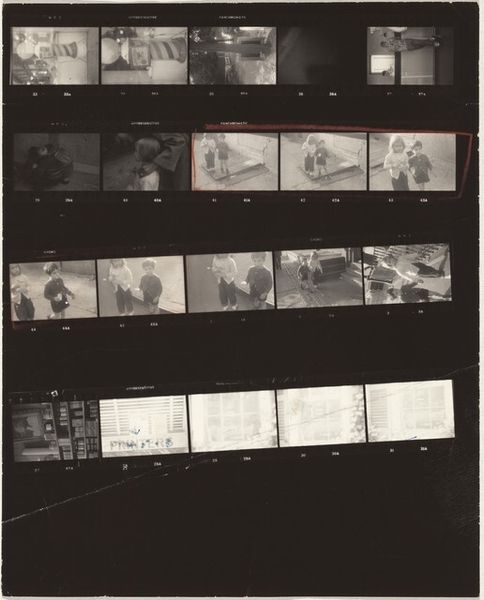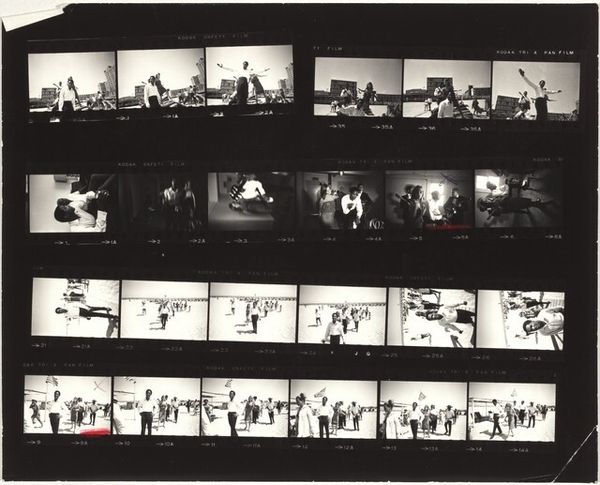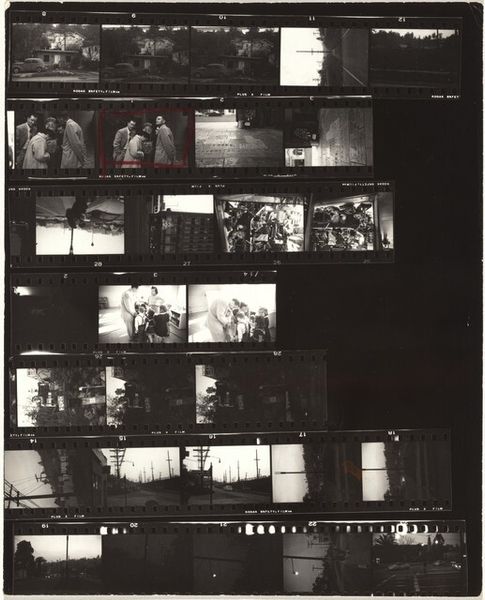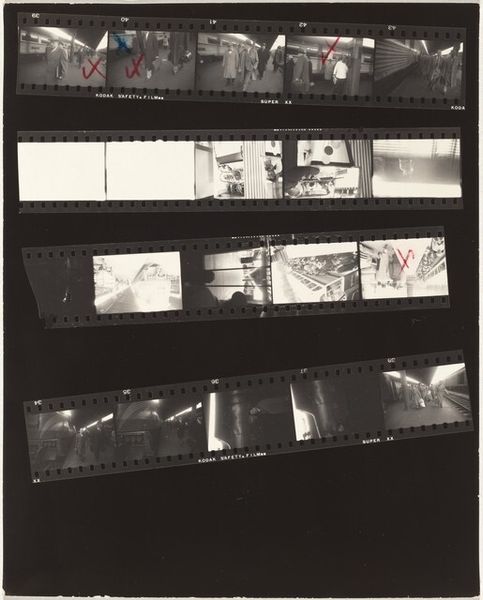
photography, gelatin-silver-print
#
portrait
#
dark colour hue
#
dark object
#
dark hue
#
street-photography
#
dark monochromatic
#
photography
#
dark-toned
#
dark colour palette
#
gelatin-silver-print
#
black object
#
dark colour palate
#
dark vibe
#
modernism
#
dark
Dimensions: overall: 21.9 x 27.8 cm (8 5/8 x 10 15/16 in.)
Copyright: National Gallery of Art: CC0 1.0
Curator: Editor: Okay, so we're looking at Robert Frank's "Various family S28" from 1951, a gelatin silver print showing rows of different photographs, contact sheet style. It feels very fragmented, like snippets of different stories. What do you see in this piece, and how can we interpret its structure? Curator: Well, what strikes me immediately is the layering – not just of images physically arranged on the sheet, but conceptually. Frank isn't just presenting single photographs; he's presenting the *process* of seeing, selecting, and archiving. The contact sheet format exposes the photographer's choices, the frames that didn't make the final cut. Do you notice how this defamiliarizes the traditional notion of a pristine, perfect photograph? It reveals the messy reality behind constructed images, no? Editor: That's true. I hadn't thought about it as revealing a process, but now I see it. It also makes me think about accessibility...like breaking down the "untouchable" aura of art. Curator: Exactly! And if we consider the context of 1951, in the midst of the Cold War anxieties and burgeoning consumerism, this kind of fragmentation could be seen as a visual reflection of societal anxieties. What constitutes "family" in a society built on prescribed roles and images? He includes some darker and stranger photos in contrast to photos of family. What does that evoke? Editor: Hmmm...So, you're suggesting that the breakdown of visual narrative reflects the potential cracks within societal structures and ideals. Very insightful! Maybe that relates to how different groups and types of families were represented in popular media at the time. Curator: Precisely. Think about whose stories were *not* being told. Whose images were being marginalized? Frank seems to push against the dominant narrative, almost hinting at what lies beyond the constructed ideal of family and social conformity. The photographs start conversations around intersectionality. Editor: Wow, I really appreciate you framing it that way. It takes the artwork into a bigger discussion of society at the time. Curator: Absolutely, looking at a photograph not only as an aesthetic object, but also an entry point to wider societal issues, especially relating to marginalized stories, adds to our understanding and appreciation. I appreciate the possibilities it holds, too. Editor: Yeah, that was a helpful conversation. Now, I'll definitely think about the process behind the photos themselves.
Comments
No comments
Be the first to comment and join the conversation on the ultimate creative platform.
